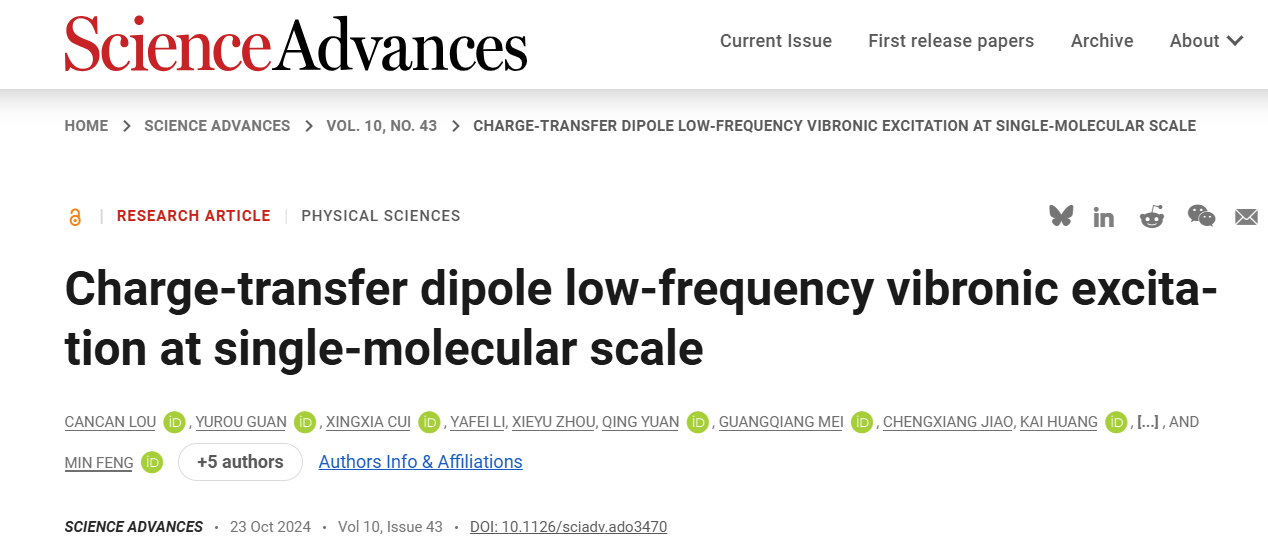Abstract
Scanning tunneling microscopy (STM) vibronic spectroscopy, which has provided submolecular insights into electron-vibration (vibronic) coupling, faces challenges when probing the pivotal low-frequency vibronic excitations. Because of eigenstate broadening on solid substrates, resolving low-frequency vibronic states demands strong decoupling. This work designs a type II band alignment in STM junction to achieve effective charge-transfer state decoupling. This strategy enables the successful identification of the lowest-frequency Hg(ω1) (Raman-active Hg mode) vibronic excitation within single C60 molecules, which, despite being notably pronounced in electron transport of C60 single-molecule transistors, has remained hidden at submolecular level. Our results show that the observed Hg(ω1) excitation is “anchored” to all molecules, irrespective of local geometry, challenging common understanding of structural definition of vibronic excitation governed by Franck-Condon principle. Density functional theory calculations reveal existence of molecule-substrate interfacial charge-transfer dipole, which, although overlooked previously, drives the dominant Hg(ω1) excitation. This charge-transfer dipole is not specific but must be general at interfaces, influencing vibronic coupling in charge transport.

文章链接:C. Lou, Y. Guan, X, Cui et al., Charge-transfer dipole low-frequency vibronic excitation at single-molecular scale, Science Advances, DOI: 10.1126/sciadv.ado3470,https://www.science.org/doi/10.1126/sciadv.ado3470
